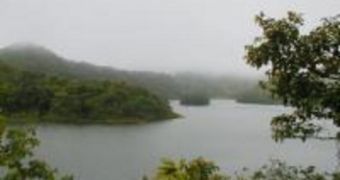The greenhouse effect which triggers global warming, causing the sea level to grow as the ice at the poles melts more and more each day, could pose a serious threat to the coastal communities which could lose up to 50 percent of their fresh water supplies than previously thought. Using simulations hydrologists at the Intergovernmental Panel on Clime Change (IPCC) have shown how salty water coming from the sea could enter the fresh water aquifers. IPCC estimates that the ocean could rise up as much as 23 inches in the next hundred years.
Previous assumptions considered that salty water would not move inland and it will penetrate the ground only as far as it did above. But new research shows that the salty water in combination with fresh water mix in complex ways, depending on the texture of the sand along the coastline and in some cases brackish water can extend 50 percent further underground than it does above the ground. Brackish water as well as saltwater is not safe to drink, as they both cause dehydration. Less than 250 milligrams of salt per liter means that water is safe to drink.
The heating clime is already affecting part of the shorelines. The vulnerable coastlines include some of the most populated places on Earth, more than 40 percent of the population of the world living less than 60 kilometers away from the shore.
Scientists have drawn the maps of the shorelines after the water rise took place and they have seen a potential consequence of clime change. The drawing of similar maps could show how the coastal water supply would be affected. But many variables still remain unknown and it is not clear enough how such changes will affect the areas with complex underground structures.
Simulations conducted on certain layers of sand, being present along the shoreline, showed that the more layers a coast has, the more saltwater and fresh water will mix. Between the incoming salt water and the inland freshwater a pool of brackish water forms, which can extend from 10 to 50 percent further inland.
Studies show that more than half of the United States gets fresh drinking and water to irrigate crops, from underground sources. To obtain cheap water, there is a need to exploit more of the surface flowing water, from rivers and lakes. Fresh water can be obtained from salt water, but the conversion process is too expensive.

 14 DAY TRIAL //
14 DAY TRIAL //